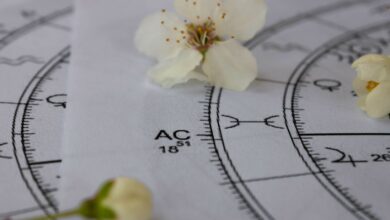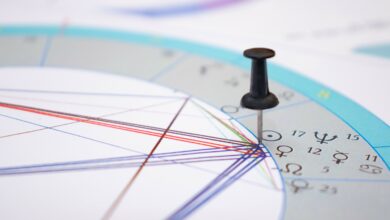
Whether you are a novice or experienced astrologer, understanding house systems are an important aspect of astrology. House systems determine the way in which the 12 houses of the astrological chart are divided and interpreted. There are several astrological house systems with some being more highly preferred than others. Deciding on which house system is most useful to you requires your own personal research.
Defining House Systems
Read More »The Astrological House Systems
Most Known House Systems
Equal
The Equal house is one of the oldest astrological systems dating back to the Hellenistic period. It is still used widely today in Vedic astrology. In this system, the first house begins at zero degrees with the ascendant’s sole purpose of providing definition to the rising sign. With Equal house, the 12 houses are divided into 30 degrees, and the Midheaven is not associated with the 10th house directly but rather moves around based on calculations.
Whole
The whole sign system is the oldest house system and was first used in Hellenistic astrology. With this system, the rising sign marks the beginning of the first house, and each house exactly correlates to each following zodiac sign. Just as with the Equal house system, the ascendant doesn’t always coincide with the initial degrees of the first house.
It appears that the whole sign system has made a comeback in the 80s and 90s after not being used much since the Middle Ages. There are people that prefer the whole sign system as they believe it offers accuracy in its simplicity.
Placidus
The Placidus house system is quite popular, and it is based on ecliptic movement that ranges from the nadir (bottom of the chart), horizon, and to the Midheaven (usually the highest point of the chart). While it is a preferred house system, since it is based on ecliptic movement the houses are not the same degrees resulting in some houses being much larger than others. In some cases, depending on the location where the natal chart is drawn for, such as in far northern latitudes, there will be some houses that will not be used at all.
Lesser Known House Systems
Quadrant
The quadrant house systems use a four-point system, hence the name, using the angles of the astrology chart, which include the ascendant, nadir, descendant, and midheaven. The two main quadrant systems include Porphyry and Regiomontanus.
Porphyry’s system is considered the base for the other quadrant house systems and uses a three equal part division system of the ecliptic. The Regiomontanus system is an outdated and rarely used predecessor of the popular Placidus house system. It divided the zodiac into 12 units across the equator point.
Meridian
The Meridian House system is not widely used, but it is often used for relocation astrology. The celestial equator is divided into 30 degrees across 12 parts. Those 12 parts are then projected onto the ecliptic with the inclusion of the North and South poles.
Choosing a House System
While there are several popular astrological house systems, there is no one house that is unanimously preferred. People like various house systems for different reasons. For example, some people prefer either Equal or Whole house systems because they offer a simplified alignment for interpreting the houses. Others prefer Placidus believing that the varied house sizes are more accurate due to the use of ecliptic movement.
Determining which house system is best for both personal and professional astrological study and consultations requires research. Most people test the various house systems for accuracy not only for natal chart interpretation but also for transits, progressions, and other astrological readings such as synastry and composite charts. After thorough research testing the various house systems, it is possible to determine which house system provides the most accurate results for astrological interpretations.





